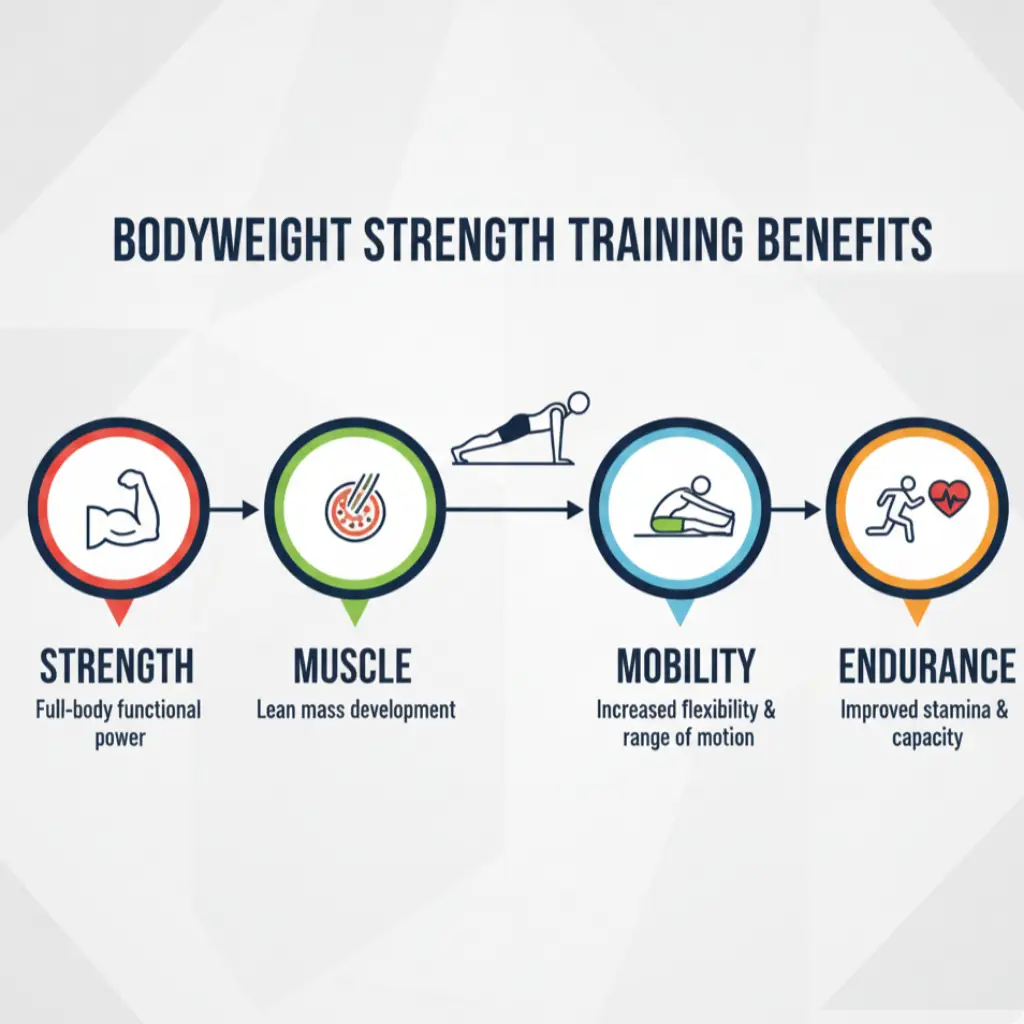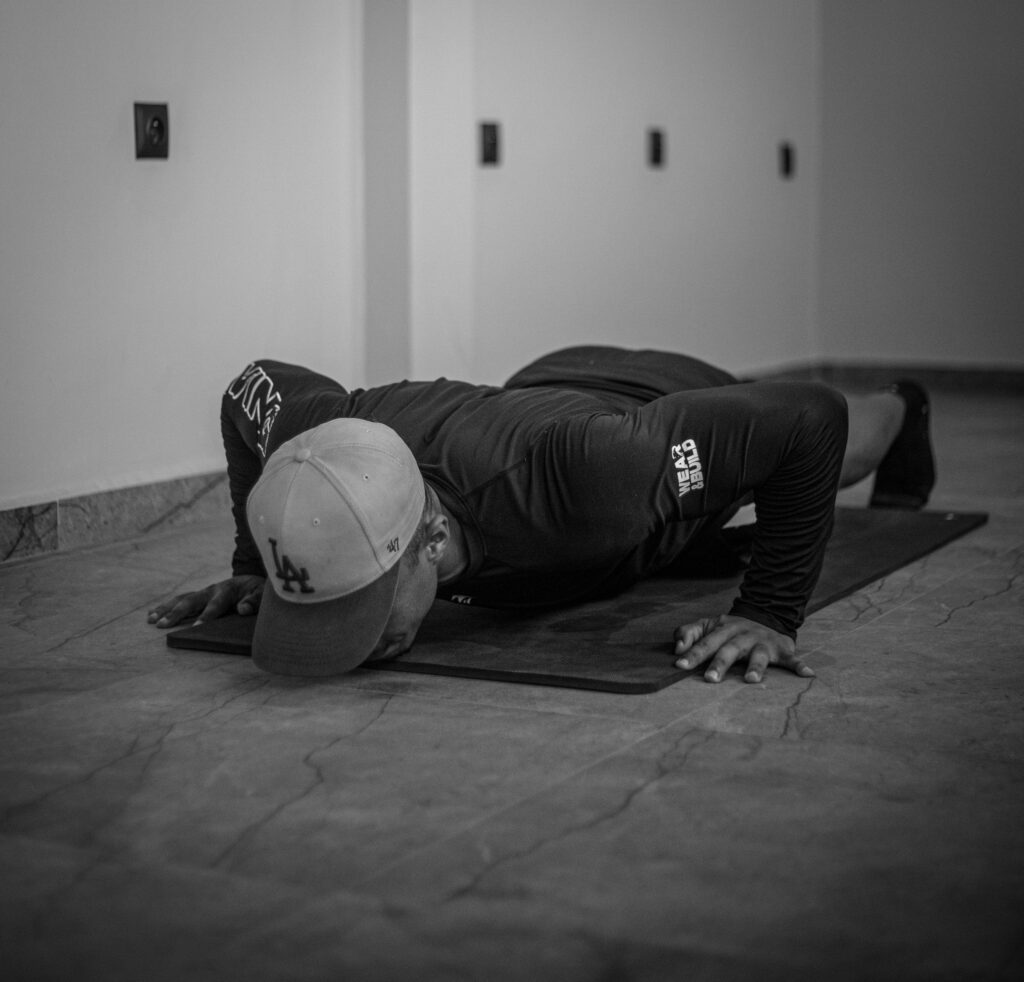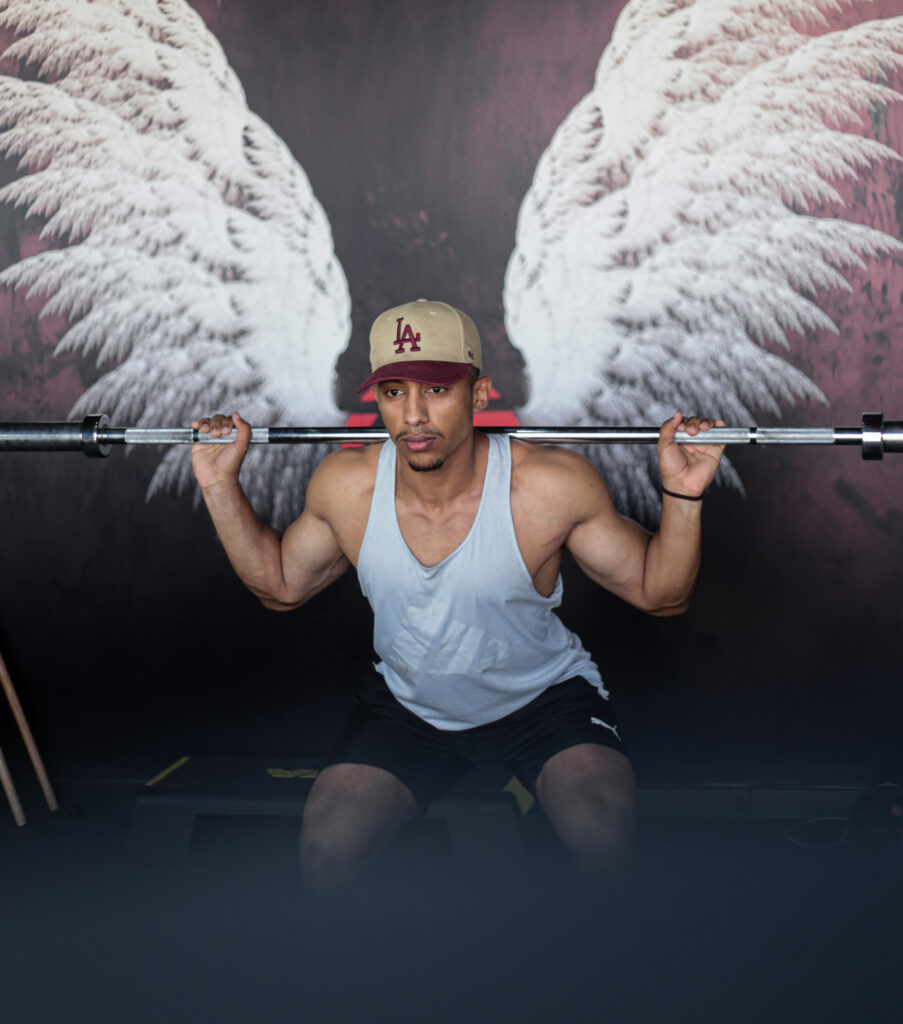Bodyweight strength training is one of the most effective ways to get stronger, fitter, and leaner—without needing expensive equipment. A no equipment workout is simple, scalable, and can be done at home, in a park, or while traveling. Whether you’re starting a bodyweight beginner plan or looking for a full body bodyweight workout, the right approach will help you build muscle and strength using only your body.

Table of Contents
Introduction to Bodyweight Strength Training
What is Bodyweight Strength Training?
Bodyweight strength training uses your own body as resistance to develop muscle and power. Classic movements like push-ups, squats, pull-ups, and planks form the foundation. Unlike machine-based training, bodyweight exercises build functional strength by engaging stabilizing muscles.
Why Choose a No Equipment Workout?
Convenience is the biggest advantage. You can perform a home strength workout without equipment, saving both time and money. It also removes excuses—since no gym membership is required, consistency becomes easier. Studies show bodyweight programs improve muscle endurance and strength, particularly when structured progressively.
Benefits of a Full Bodyweight Strength Training Routine
Strength, Muscle, and Endurance Development
Bodyweight exercises can stimulate hypertrophy and strength. For example, push-up progression—from knee push-ups to one-arm push-ups—applies the principle of progressive overload, a proven method for building muscle.
Injury Prevention and Mobility Gains
Because the movements are natural and functional, bodyweight training reduces joint stress. Squats improve hip mobility, push-ups improve shoulder stability, and planks reinforce core integrity. Over time, this lowers injury risk and builds resilience.
Bodyweight Strength Training for Beginners

Creating a Bodyweight Beginner Plan
Beginners should start with basic movements and slowly increase difficulty. A typical plan might include push-ups, squats, glute bridges, and planks. Frequency matters—aim for three full-body sessions per week. Beginner Strength Training Plan offers an excellent structure for newcomers.
Push-Up Progression and Other Foundational Moves
Push-ups teach pressing strength, planks build core endurance, and squats develop lower-body power. For complete balance, add pulling work like inverted rows or towel rows. This mix creates a strong base to build from.
Bodyweight Strength Training at Home
Building a Home Strength Workout Without Equipment
Your living room can become a gym. Chairs can be used for dips, walls for wall sits, and the floor for push-ups. A structured no equipment workout can still hit all major muscle groups effectively.
Full Body Bodyweight Workout (No Equipment Needed)
Here’s an example routine you can follow:
| Exercise | Sets x Reps |
|---|---|
| Push-Ups | 3 x 12 |
| Squats | 3 x 15 |
| Glute Bridges | 3 x 15 |
| Plank | 3 x 30 sec |
Advanced Bodyweight Workout Program Design
Progression and Overload with Bodyweight Only
Progressive overload is critical. You can progress by slowing tempo, adding pauses, increasing reps, or shifting to harder variations like pistol squats or archer push-ups. Progressive Overload for Beginners explains this in detail.
Combining Bodyweight with Minimal Equipment (Optional)
Although no equipment is needed, adding a pull-up bar or resistance bands can diversify training. For those interested in weight training later, Dumbbell Strength Training is a natural progression.
Bodyweight Exercises to Build Muscle
Best Upper Body Bodyweight Exercises
Push-ups (standard, diamond, decline), dips, and pull-ups are staples. Handstand push-ups build powerful shoulders and triceps.
Best Lower Body Bodyweight Exercises
Pistol squats challenge single-leg strength, lunges improve stability, and calf raises target the lower leg. Glute bridges and step-ups strengthen posterior chain muscles, essential for balanced development.

Programming Your Bodyweight Strength Training
Weekly Structure of a Bodyweight Workout Program
A simple framework:
- 3 Days/Week: Full body sessions (push, pull, legs, core)
- 2 Days/Week: Active recovery (mobility, walking, yoga)
- 2 Days/Week: Rest and sleep focus
Bodyweight Strength Training for Different Goals
- Muscle Growth: High tension holds, slower reps, push-up progression.
- Weight Loss: Circuit-style training, paired with diet adjustments. See Strength Training for Weight Loss.
- Endurance: Higher reps and timed sets.
- Women Beginners: Scalable moves like knee push-ups and supported squats. See Strength Training for Women Beginners.
Common Mistakes and How to Progress Safely
Mistakes in Bodyweight Strength Training
Skipping progression, rushing through form, and neglecting recovery are common pitfalls. Common Strength Training Mistakes covers these in depth.
How to Stay Consistent at Home
Consistency is the hardest part. Track your reps, set a schedule, and celebrate progress. Remember—long-term results depend on patience, recovery, and avoiding burnout. Strength Training Recovery is key to growth.
Conclusion: Actionable Key Takeaways
Bodyweight strength training is practical, effective, and accessible for all fitness levels. Beginners can start with a bodyweight beginner plan, while advanced athletes can use push-up progression and pistol squats for challenge. No equipment workout routines save money and time, and they can be scaled for muscle growth, fat loss, or endurance. Start with basics, progress gradually, and remain consistent for lasting results.
FAQs
Bodyweight Workout Plan PDF – Where Can I Find One?
Many fitness sites provide free PDFs. Look for structured, progressive plans that balance push, pull, legs, and core.
What Is the Best Bodyweight Workout Program?
A good program includes push-ups, squats, lunges, rows, planks, and progressions. Variety keeps muscles challenged.
Is Bodyweight Strength Training Good for Beginners?
Yes, it’s ideal for beginners—safe, effective, and scalable.
Can I Do Bodyweight Strength Training at Home?
Absolutely. With just floor space, you can achieve a full body strength workout.
What Is a Full Body Bodyweight Workout (No Equipment)?
Push-ups, squats, lunges, dips, and planks create a complete session.
Can Bodyweight Exercises Build Muscle?
Yes. Studies confirm that progressive overload with bodyweight builds muscle similar to weight training.
What Are the Best Bodyweight Exercises to Do at Home?
Push-ups, squats, lunges, dips, glute bridges, planks, and step-ups.
Visit my Instagram account for more
